Insights from Stefano Casati: Pioneering design futures at the Design Insider AI forum
Get ready for an industry-defining moment at the Design Insider AI Forum, an unparalleled half-day event that promises to drive forward the conversation on the use of AI by commercial interior designers and suppliers! Held at Gresham, 28 St John’s Lane, Clerkenwell, this forum is a must-attend event on the 28th of March, 2024, from 2pm to 7pm, offering an immersive journey into the innovative intersections of AI and design.
During Design Insider’s AI Forum, Stefano Casati, Managing Director & Principal Architect at Imagine by Casati, will share his insights on integrating AI design innovation and strategic thinking in the commercial sector with his fellow panellists Abby Le Marchand, Associate Principal at HLW and Charlie Keitch, Industrial Designer and Brand Management at Jones & Partners. Stefano’s insights on AI’s role in his projects, particularly the Banana Republic flagship store design, illustrate how AI can significantly streamline and enhance the design process.
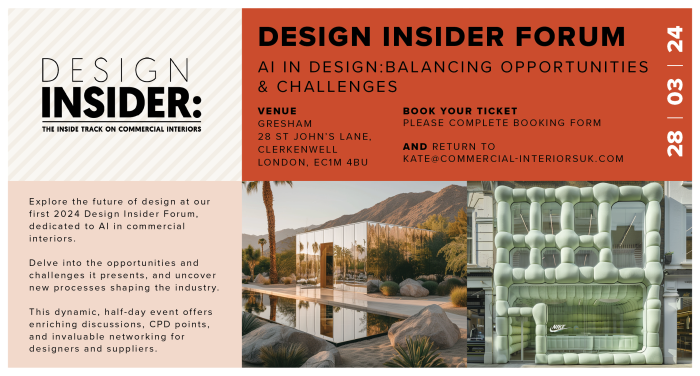
Ahead of this exciting event, we had the pleasure of speaking with Stefano Casati, Managing Director & Principal Architect at Imagine by Casati, a studio which harnesses the power of AI and modern technology to create cutting-edge and highly crafted designs that are tailored to their clients’ needs. The team’s experiential marketing approach creates immersive experiences for luxury retail, events, and fine art.

Stefano Casati, Managing Director & Principal Architect at Imagine by Casati
Could you start by introducing yourself, detailing your role, and giving us an overview of your design philosophy at Imagine by Casati?
I am Stefano Casati, the founder and CEO of Imagine by Casati. We operate as a boutique practice, with innovation as our central ethos. At Imagine by Casati, we are eager to delve into emerging technologies, comprehending their strengths and limitations to seamlessly integrate them into our workflow and provide optimal outcomes for our clients.
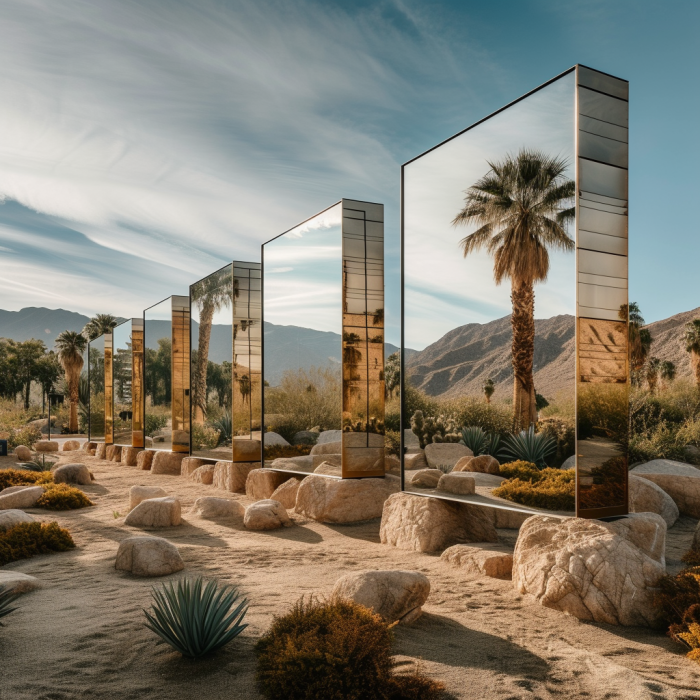
Coachella-Retreat Concept by Imagine by Casati
Moreover, we are particularly interested in exploring the interface between the digital realm and the physical world. Specifically, we collaborate with an extensive array of fabrication technologies and materials to discern the most appropriate solutions for manifesting conceptual visions.
Reflecting on your extensive experience in the commercial sector, can you describe your journey towards integrating AI tools into your design practice?
Incorporating AI tools into our design workflow has proven to be a remarkably smooth and intuitive process. We’ve been actively exploring AI for over a year, affording us valuable insights into its advantages and constraints. Embracing this new tool, we’ve been integrating it across all our projects in varied capacities, consistently evolving and adapting to keep pace with the rapid advancements in AI technology.
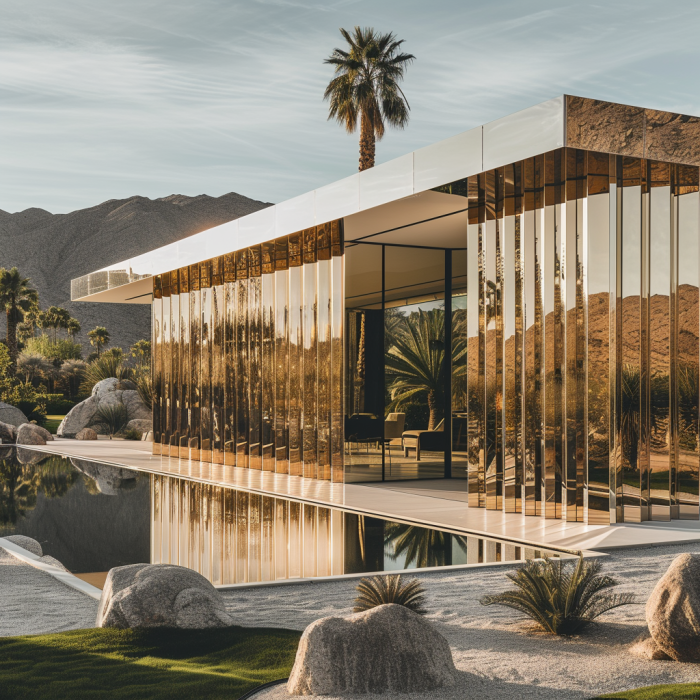
Coachella-Retreat Concept by Imagine by Casati
How has AI become integral to your work at Imagine by Casati, and in what ways do you believe it sets your firm apart in the commercial design sector?
Through our comprehension and active engagement with AI, we’ve come to understand its immense potential, allowing us to streamline our workflow effectively.
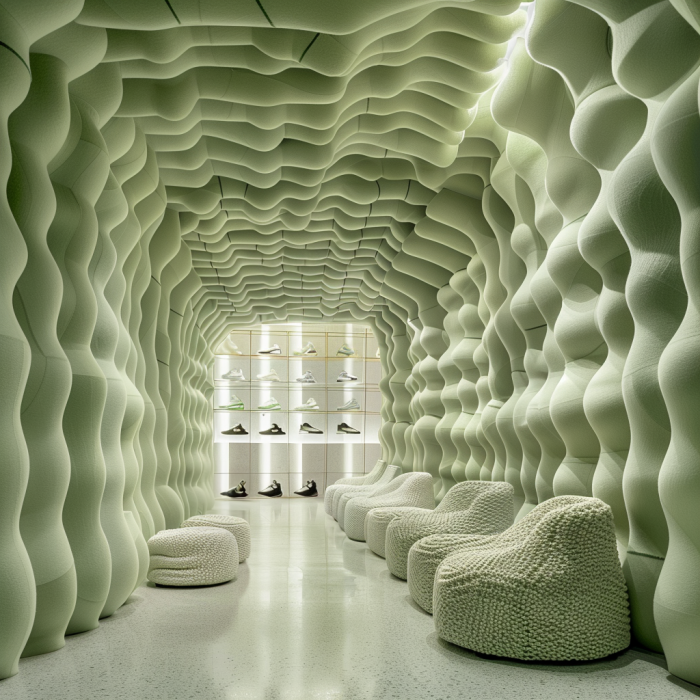
Nike Concept by Imagine by Casati
Concurrently, leveraging AI alongside our accumulated expertise has enabled us to collaborate seamlessly with clients across diverse disciplines, ensuring a cohesive and coherent narrative throughout the entirety of each project.
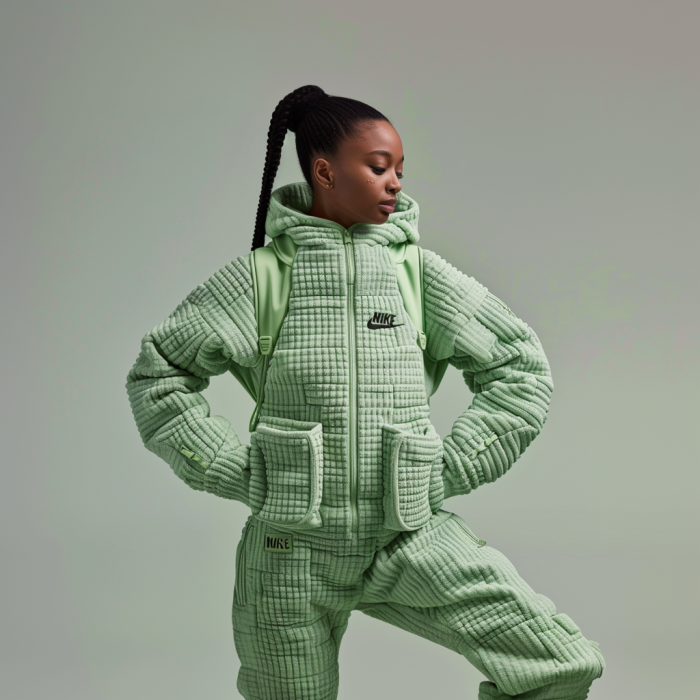
Nike Concept by Imagine by Casati
Regarding your recent project with Banana Republic, could you detail the process and highlight how AI informed and facilitated the realization of your vision?
In September 2023, we entered into a collaboration with Banana Republic to conceptualize their inaugural BR Home flagship store in West Hollywood. Our partnership involved close cooperation with the BR team, allowing us to explore numerous design possibilities. Utilizing AI, we swiftly reached a consensus on a concept design, enabling us to progress efficiently to the subsequent stages of development. Throughout the project, we’ve integrated AI at various stages, carefully considering its constraints while leveraging its capabilities.
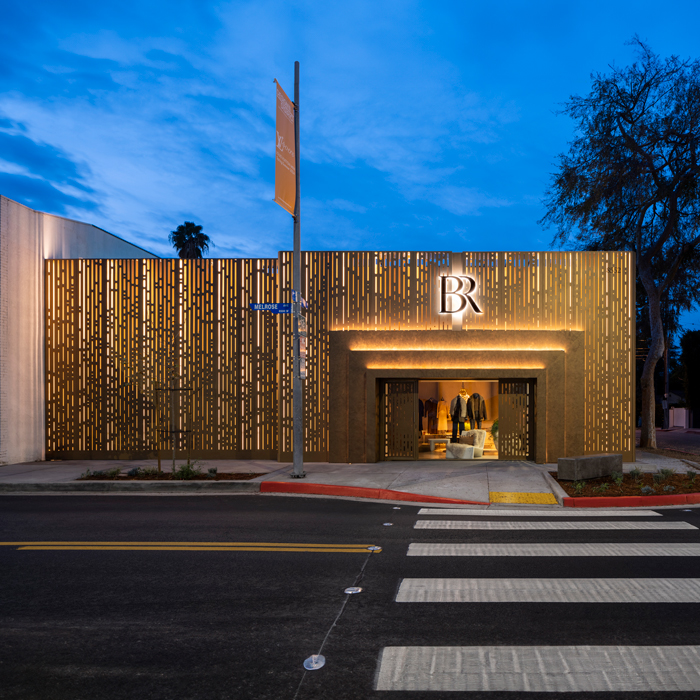
Banana Republic Home flagship Store in West Hollywood by Imagine by Casati. Photography: Josh Cho
Given AI’s growing influence, how do you envision its impact on the creative and design sectors moving forward? What specific opportunities do you foresee?
In my view, AI is set to become an indispensable component of the design process, encompassing both internal operations and client interactions, embodying a holistic approach within our company ethos. The potential for leveraging AI is virtually boundless. Integrating AI into our design workflow offers distinct advantages in articulating ideas and captivating clients, while also facilitating cross-disciplinary collaboration for designers. Our experience, exemplified in our collaboration with Banana Republic, demonstrated how this approach allowed us to meticulously curate and execute various aspects of the project and its associated event. Through AI, we were able to provide a design framework that seamlessly translated the overarching creative vision from the exterior into diverse objects and methodologies.
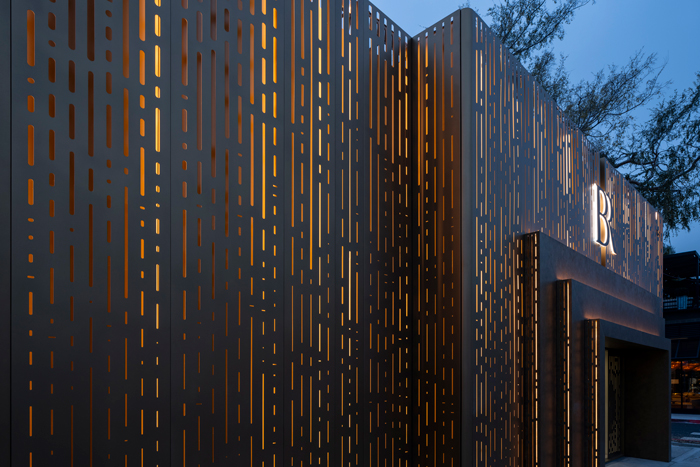
Banana Republic Home flagship Store in West Hollywood by Imagine by Casati. Photography: Josh Cho
While AI offers numerous benefits, it also poses certain challenges. Could you discuss some of these challenges and your perspectives on overcoming them?
Like any emerging technology, AI brings both excitement and disruption. One of the primary challenges we encountered was linked to intellectual property rights and managing client expectations. These were hurdles we had to confront and surmount, although I recognise that AI could potentially pose challenges in meeting client demands, especially regarding expectations for accelerated timelines due to the rapid processing capabilities of AI.
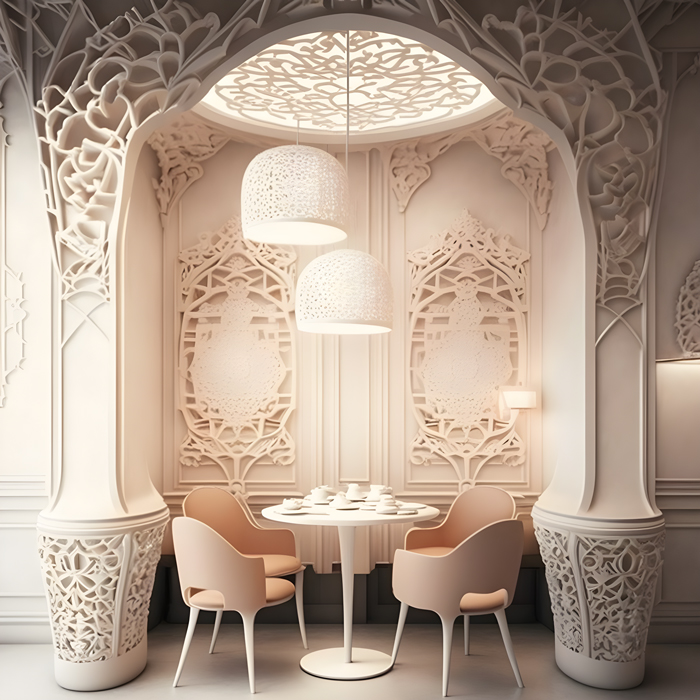
LaDuree Concept by Imagine by Casati
For designers beginning to explore AI, what foundational steps would you recommend? Are there particular software tools or educational resources you recommend?
Navigating the realm of AI can indeed feel daunting, particularly with the rapid emergence of new AI tools almost daily. My advice is to take the plunge and acquaint yourself with the AI landscape. Midjourney serves as an excellent starting point and has been invaluable in my own practice. Additionally, other interesting AI tools include ChatGPT, Runway App, and Stable Diffusion. Fortunately, there is a wide range of free resources available online for learning. In essence, immersing oneself in practical usage is the most effective approach to grasp AI intricacies and cultivate a personal methodology for its application.
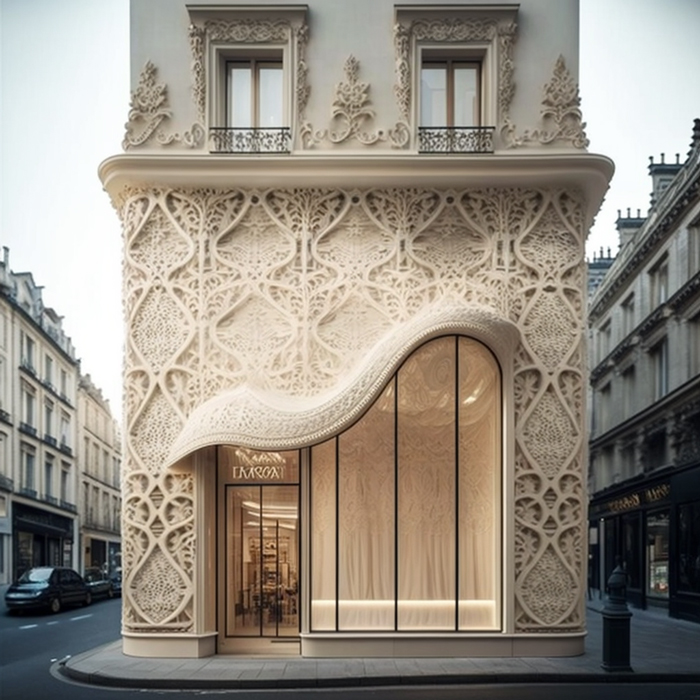
LaDuree Concept by Imagine by Casati
Can you share an example where AI enabled you to achieve something truly unique, something not possible with traditional design tools?
I discovered that AI enabled me to seamlessly blend ideas, materials, and techniques from diverse realms. One notable example was a concept I developed for a potential concept popup for LaDuree. In this instance, I successfully fused Parisian architecture with the delicacy and ethereal quality of lace. The outcome was a sophisticated and intricate design heavily influenced by lace craftsmanship and the essence of Parisian architectural style. This concept served as the guiding principle that inspired the entirety of the interior series, extending even to the design of the macaroon.
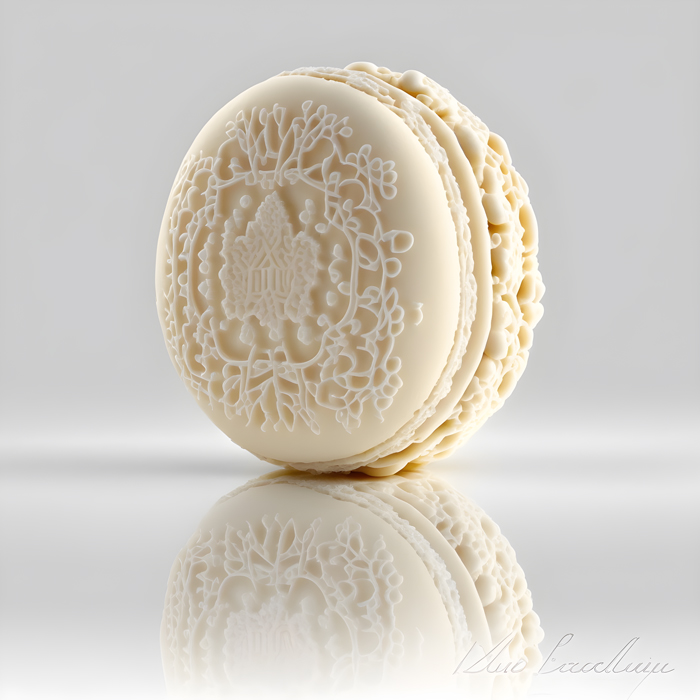
LaDuree Concept by Imagine by Casati
How do you navigate the ethical considerations and responsibilities that come with using AI in design projects?
In my personal approach, I tend to avoid using terms that directly reference a specific artist or designer, as it aligns with my personal preference. I find that expressing ideas using my own language and sensibility yields the most fruitful outcomes when collaborating with AI. I am also mindful of the scrutiny surrounding AI and am always transparent about its use and application at various stages of the design process.
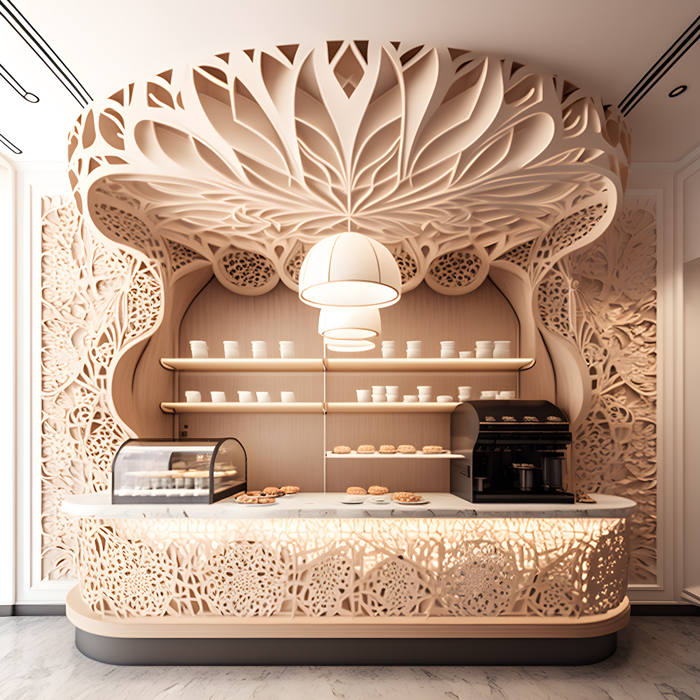
LaDuree Concept by Imagine by Casati
However, I view AI as just one component of my work, particularly when bridging the gap between the digital and physical realms. Moreover, I believe it’s essential for active users of AI to educate and share insights regarding its limitations and benefits. This ensures a balanced understanding of its role within the design landscape.
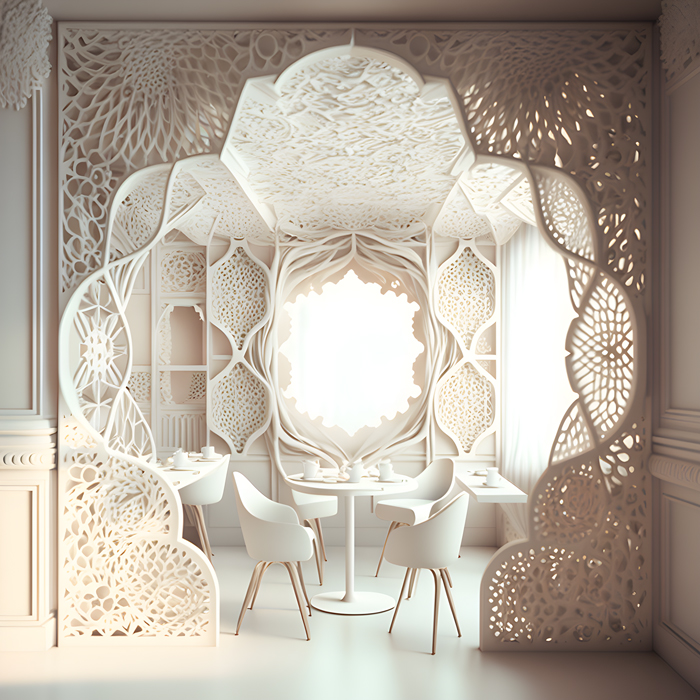
LaDuree Concept by Imagine by Casati
Based on your experiences, what are the next big trends or innovations in AI that you anticipate will further transform the design industry?
Undoubtedly, the advancements in text-to-3D and text-to-video technologies signify significant developments on the horizon. Yet, I hold a firm belief that, despite the rapid pace of technological evolution, humans will continue to play a pivotal role in the design process. Personally, I envision AI integration primarily in streamlining repetitive and time-consuming tasks, thereby affording designers and creatives more time to hone their craft and devise superior concepts for clients, thereby facilitating a smoother conversion process.




